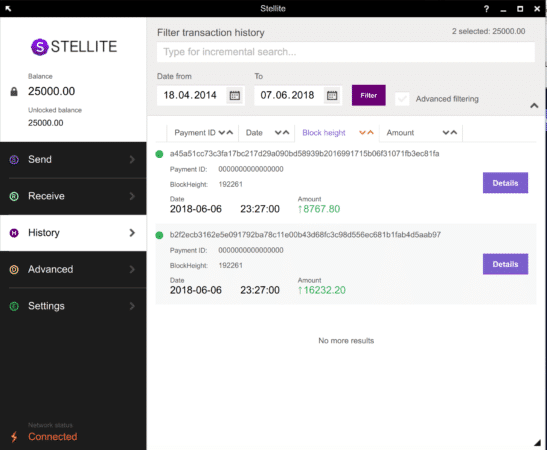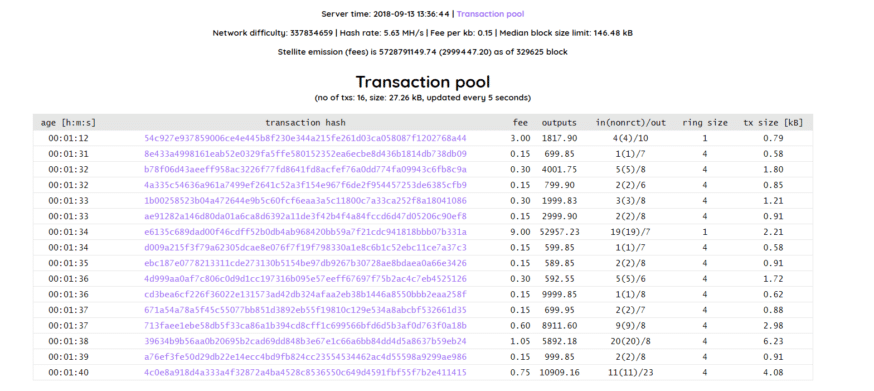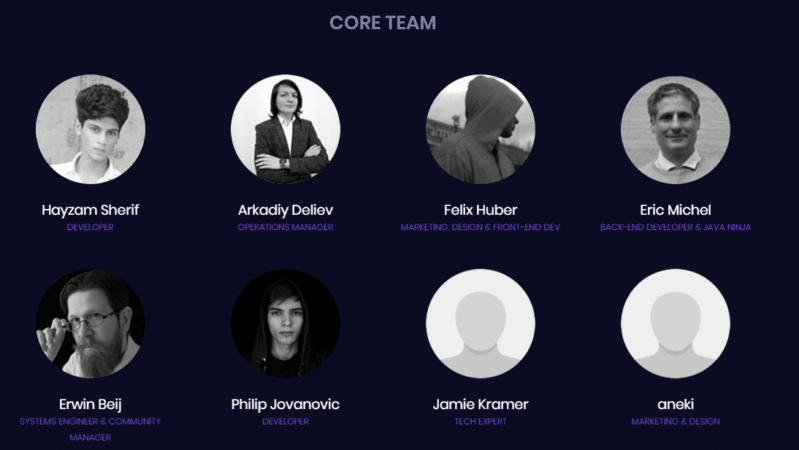Latest news about Bitcoin and all cryptocurrencies. Your daily crypto news habit.
What is Stellite (XTL)?
Stellite is a privacy-focused cryptocurrency project that aims to improve the functionality of Proof-of-Work. Let’s dive into all the details about the project’s mission, the Stellite Wallet, technical features, and potential use cases.
Stellite Project Mission
The main goal of Stellite is to solve issues that have affected traditional Proof-of-Work coins (i.e. Bitcoin, Ethereum, and others). According to the project whitepaper, hard-code trusted nodes and peers create security vulnerabilities. For example, whenever a hacker gains access to a node, this often presents long-term problems for the creation of future nodes.
In turn, these and other types of blockchain hacks dissuade potential user adoption. To solve this issue, Stellite devised an innovative solution. Its blockchain uses IPFS as a type of permanent storage of the node list and ZeroNet as a dynamic front-end of this permanent storage.
As a result of these and other technical improvements, Stellite plans to provide a solution for true mining on all devices (i.e. smartphones, smart televisions, etc.). This type of mining is in direct contrast to existing forms of mobile mining for popular cryptocurrencies on the market, which are mostly just simulations.

Stellite combines IPFS and ZeroNet technologies to create a decentralized, censorship-resistant network.
What About the Stellite ICO?
Unlike the vast majority of cryptocurrencies on the market, Stellite did not conduct an ICO or even a pre-sale. Instead, 0.6% of the total coin supply (126 million XTL) was pre-mined. Outside of the pre-mine, zero coins were locked. Reading through the project website and whitepaper, it’s not clear why there wasn’t an ICO. Neither is it clear where the funding for the project’s development is coming from.
Stellite Wallet
Both GUI (Graphical User Interface) and CLI (Command Line Interface) wallets for Windows, Mac, and Linux are available. Additionally, Cheddur app, a mobile wallet available on both iOS and Android, has integrated the Stellite wallet. Detailed installation instructions for each type of Stellite wallet can be found here.

Users can access Stellite wallets on a variety of devices.
Privacy Features
Another important feature of Stellite is its ability to facilitate untraceable payments. To do this, the protocol utilizes the CryptoNote algorithm, an important component of popular privacy coins like Monero and Bytecoin.
Stellite’s CryptoNote algorithm eliminates the possibility of tracing payments by automatically creating multiple unique one-time keys, derived from a single public key, for each P2P payment.
The project does this by modifying the well-known Diffie-Hellman exchange protocol. Originally, this protocol allowed two parties to produce a common secret key derived from their public keys. With Stellite, the sender uses the receiver’s public address and randomized data to compute a one-time key for each payment.
Confirmations and Throughput
Throughput is one of the biggest issues that many blockchain projects are hoping to solve. Whenever a sender wants to send funds, the recipient usually has to wait a variable amount of time, ranging from a few seconds to many hours. This delay is due to the fact that each transaction takes time to be added into blocks. For blockchain and cryptocurrency payments to gain mainstream adoption, faster transaction speeds are needed. Stellite’s potential solution for throughput is to create a custom point-of-sale system that works with mobile wallets.
With this technology, merchants (a.k.a. recipients) can accept payments with zero confirmations. Additionally, each recipient can choose to customize the number of confirmations needed. By offering this functionality, Stellite may be able to ensure both high security and throughput. This is especially important as many privacy coins tend to have longer transaction completion times over non-privacy coins.
Still, there isn’t much information on the number of transactions per second that Stellite is capable of handling. It would also be interesting to see a statistical breakdown of how many confirmations users accept on average.
Stellite is also simplifying the use of nodes through an application called StellitePay, which uses a single server (much like a centralized exchange) before committing onto the network. The purpose of this application is to further the possibility of user adoption for novice users that would otherwise not want to undergo the node setup process.

Stellite allows users to view up-to-date transaction information via its own block explorer.
ASIC Resistance
The Stellite project team also takes the ASIC vs. non-ASIC debate seriously. As seen with Bitcoin (BTC) and other ASIC-friendly cryptocurrencies, centralized mining can have a large effect on coin supply distribution. To solve the ASIC mining dilemma, Stellite changes its PoW algorithm (CryptonightV7) slightly in regular protocol upgrades/hard forks. This is because ASIC rigs are meant to be used only for one specific function. By going with this decision, Stellite works to give CPU and GPU miners an equal chance of earning XTL.
Team and Future Roadmap
The Stellite team consists of ten people, eight of which are core members.
Stellite does offer free and open-source software that can be viewed on the project’s Github page. This allows tech-savvy users to understand how the project is progressing. According to the project website, Stellite has made significant progress in Q1 and Q2 2018. Accomplishments include exchange listings, a new difficulty algorithm, GUI wallet, GUI miner, and much more.
Most of the project’s core features, however, are still in the making. As of September 13, 2018, it’s unclear when the project aims to complete several key features. The list of uncompleted features includes StellitePay, smart mobile mining, ZeroNet & IPFS as well as other tasks in design, marketing, and business developments.

This project has eight core team members.
Exchanges
As of September 13, 2018, Stellite is listed on at least four exchanges: CREX24, Bisq, TradeOgre, and CMC. Future plans for exchange listing are not known. In terms of exchange volume, stats from CoinGecko show that TradeOgre currently plays the biggest role at over 90% for XTL/BTC trading and around 7.5% for XTL/LTC trading. Meanwhile, CREX24 is at a little over 2% for XTL/BTC.
Potential Use Cases and Conclusion
For anyone who wants to easily mine cryptocurrency, Stellite is a project to watch out for. While the project already offers features that simplify this process, most of the innovation that Stellite promises to offer is still in the works. It’s also important to note that the Stellite team is clearly committed to keeping its egalitarian Proof-of-Work algorithm and has a firm stance on ASIC-resistance. This means that miners don’t have to worry about buying the latest high-priced mining rig with the possibility of it becoming obsolete overnight.
Additionally, for cryptocurrency users who want to utilize a privacy coin but don’t want the inconvenience of slow transaction completion times, Stellite could offer a good option. It’s true that there isn’t much info available on how well the zero confirmation transaction technology works in the real world. However, the mere fact that Stellite is able to provide this option while also utilizing a well-tested privacy algorithm is a promising sign.
Disclaimer
The views and opinions expressed in this article are solely those of the authors and do not reflect the views of Bitcoin Insider. Every investment and trading move involves risk - this is especially true for cryptocurrencies given their volatility. We strongly advise our readers to conduct their own research when making a decision.